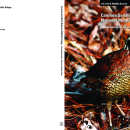What We Do
Habitat Restoration – The refuge uses several tools to accomplish habitat restoration of the longleaf pine ecosystem. These include prescribed burning, silvicultural practices such as planting and thinning trees, and application of herbicides to control unwanted, nonnative, or invasive species invasive species
An invasive species is any plant or animal that has spread or been introduced into a new area where they are, or could, cause harm to the environment, economy, or human, animal, or plant health. Their unwelcome presence can destroy ecosystems and cost millions of dollars.
Learn more about invasive species . These activities are broadly described in the refuge’s Habitat Management Plant (2014) and Fire Management Plan (2008) and more specifically prescribed in annual or biannual management unit prescriptions. On average, the refuge manages 500 to 2,000 acres per year using forest management actions and 10,000-15,000 acres per year using prescribed fire.
Agriculture – The refuge uses both cooperative (partner) and force-account (refuge conducted) agriculture to enhance areas for migratory birds and game species. These activities include planting, disking, mowing, and burning both annual and perennial grasses and crops. Since 98% of the refuge is forested, these wildlife openings, fields, and strips provide important habitat for many species.
Compatibility Determinations – In order for a public activity to occur on a national wildlife refuge national wildlife refuge
A national wildlife refuge is typically a contiguous area of land and water managed by the U.S. Fish and Wildlife Service for the conservation and, where appropriate, restoration of fish, wildlife and plant resources and their habitats for the benefit of present and future generations of Americans.
Learn more about national wildlife refuge , by law it must first be determined appropriate and compatible with the purposes of the refuge. The following activities have been determined compatible with the purpose of Carolina Sandhills NWR: hunting, fishing, wildlife observation and photography, environmental education and interpretation, bicycling, boating, commercial forestry, cooperative farming, hiking, horseback riding (by permit), jogging/walking, natural resource collection (by permit), outdoor recreational vehicle use (by permit), picnicking, public safety training (by permit), research and monitoring (by permit), and youth camping (by permit). For more information or to learn about the conditions that govern these uses, please contact the refuge.
Education & Outreach – occasionally, the refuge hosts school groups, youth organization, and civic clubs for refuge tours and site-conducted environmental education. For more information, please contact the refuge.
Management and Conservation
The Comprehensive Conservation Plan for the refuge was completed in 2010 and provided a framework for fulfilling the purposes of the refuge.
Law Enforcement
Law Enforcement is critical to every aspect of wildlife conservation. The mission of the Law Enforcement program is to support the administration of the National Wildlife Refuge System through management and protection of natural, historical, and cultural resources, property, and people on lands and waters of our National Wildlife Refuges.




